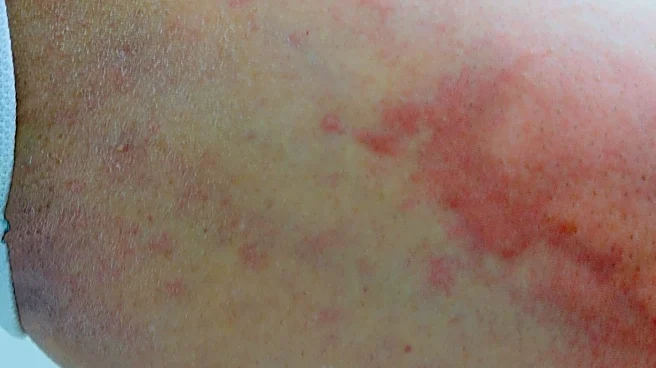What's Happening?
Researchers at the University of Oregon have discovered that combining antibiotics with chlorate significantly enhances the effectiveness of treatments against Pseudomonas aeruginosa, a common pathogen in chronic wound infections. The study, published in Applied and Environmental Microbiology, demonstrates that chlorate can potentiate various antibiotics, reducing the required dosage and increasing bacterial cell death by over four orders of magnitude. This approach could lead to more effective treatments for chronic wounds, such as diabetic foot ulcers, and help combat antibiotic resistance.
Why It's Important?
The findings are crucial in the fight against antibiotic resistance, a growing global health concern. By enhancing the efficacy of existing antibiotics, the chlorate-antibiotic combination could reduce the need for high doses and prolonged treatment durations, minimizing side effects and the risk of developing resistance. This approach also offers a potential solution for treating chronic infections that are difficult to manage with current therapies, improving patient outcomes and reducing healthcare costs associated with long-term antibiotic use.
What's Next?
Further research is needed to understand the mechanisms behind the chlorate-antibiotic synergy and to evaluate its effectiveness in clinical settings. The next steps involve testing the combination in more complex biological systems and eventually in human trials. If successful, this could lead to the development of new treatment protocols for chronic wound infections and other antibiotic-resistant conditions.










